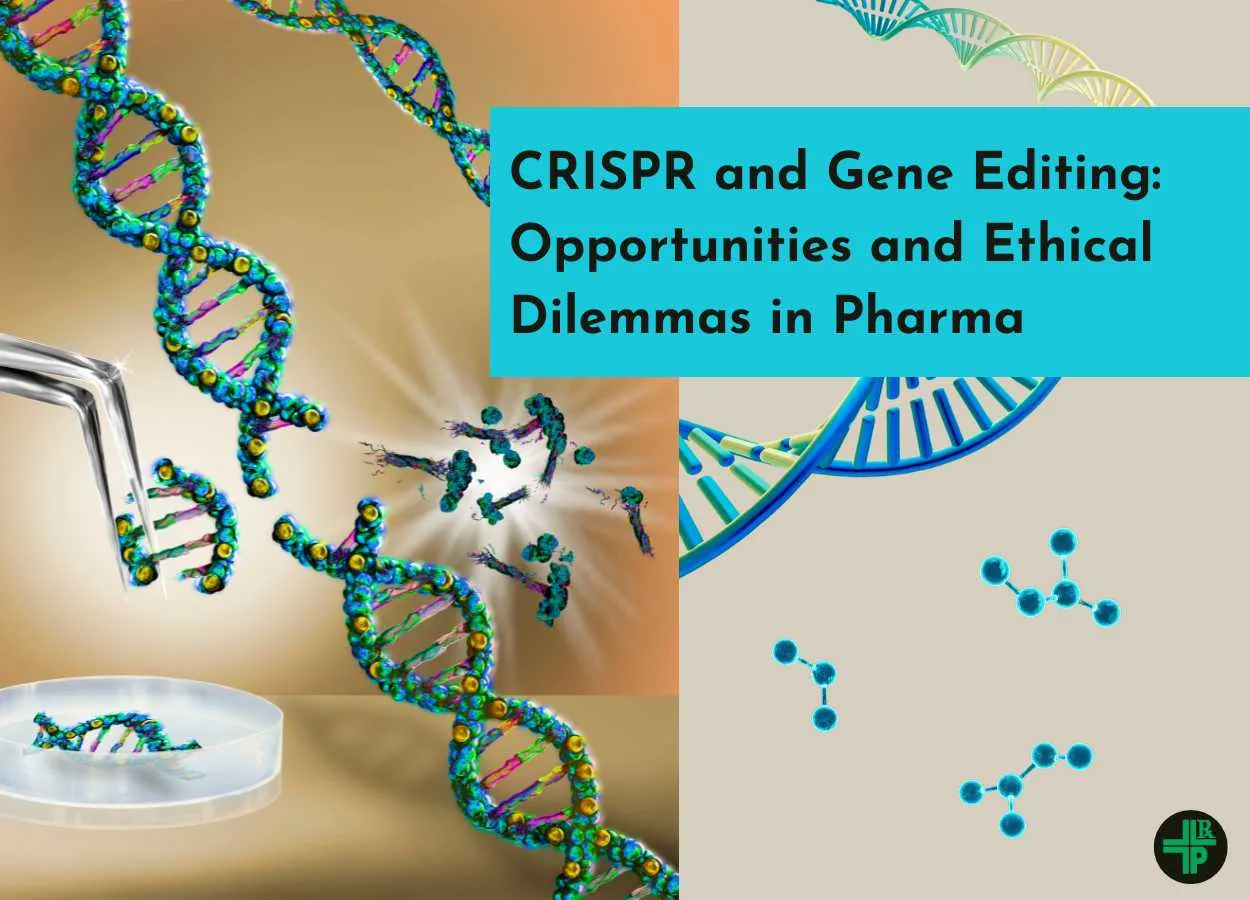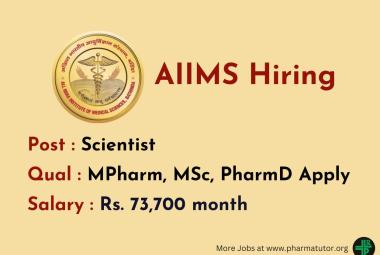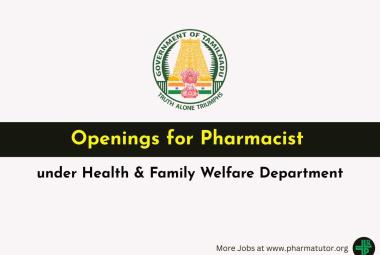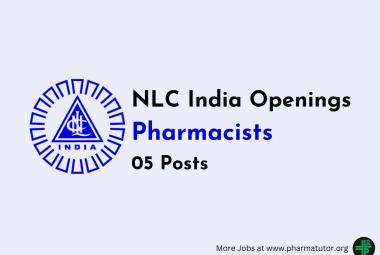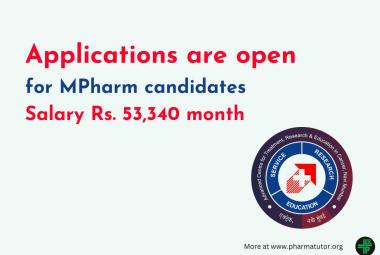In recent years, the world of medicine and pharmaceuticals has been transformed by a breakthrough technology called CRISPR-Cas9 gene editing. CRISPR is like a pair of “molecular scissors” that allows scientists to cut DNA at precise locations and then modify it. [1] What makes CRISPR revolutionary is its accuracy, simplicity, and low cost compared to older gene-editing techniques such as zinc finger nucleases or TALENs. [2] Since its discovery in 2012, CRISPR has quickly become one of the most widely used tools in genetic research.
For the pharmaceutical industry, CRISPR opens the door to possibilities that were once considered science fiction. Many human diseases are linked to errors in our DNA. If these errors can be corrected, patients may no longer just manage their symptoms with drugs, but actually be cured at the genetic level. This means pharma companies can explore new categories of medicines, ranging from treatments for inherited disorders like sickle cell disease to advanced cancer immunotherapies. It also speeds up drug discovery, since researchers can now model diseases more accurately in the lab by editing genes in cells or animals. [3]
However, with such great power comes equally great responsibility. Gene editing raises ethical, legal, and social dilemmas. Should we allow editing of embryos if it means altering not only one life but also future generations? How do we make sure the technology is safe, since mistakes in editing can create harmful mutations? And even if the technology works, will it be available only to the wealthy, making health inequalities worse? These are not just scientific questions but also moral and societal ones.
Opportunities for Pharma
Treating Genetic Diseases
One of the most exciting opportunities of CRISPR in pharma is its ability to correct inherited genetic disorders. Many of these diseases are caused by a single error in the DNA code.
For example:
- Sickle Cell Disease: a mutation in the HBB gene causes red blood cells to take a sickle shape, leading to pain and organ damage. Researchers are now testing CRISPR-based therapies that can correct this mutation in a patient’s own blood stem cells.
- Cystic Fibrosis: caused by mutations in the CFTR gene, leading to thick mucus that damages lungs and digestive systems. CRISPR offers hope by repairing this gene directly in airway cells.
Unlike conventional drugs, which often only treat symptoms, gene editing goes to the root cause of disease. This makes CRISPR therapies potentially curative rather than just palliative. If clinical trials prove safe and effective, these treatments could replace lifelong medication for many patients. [4]
Cancer Therapy
Cancer remains one of the leading causes of death worldwide, and CRISPR is offering new hope in oncology. Pharma researchers are using CRISPR to reprogram immune cells so they can better detect and destroy cancer cells.
For example:
- Scientists can remove “brakes” from T cells (the body’s main cancer-fighting cells) by knocking out genes that weaken immune activity.
- They can also insert chimeric antigen receptors (CARs) into T cells, creating powerful CAR-T therapies that specifically attack cancer.
Clinical trials are already underway in the U.S. and China where CRISPR-modified T cells are tested against blood cancers and even solid tumors. If successful, these approaches could provide personalized immunotherapies that are safer and more effective than chemotherapy. [5, 6]
Rare Diseases & Personalized Medicine
Rare genetic diseases often affect very few patients worldwide. Because of this, pharmaceutical companies traditionally invested less in finding treatments. But CRISPR changes this equation. With its precision, scientists can design targeted therapies for even small patient groups.
For example, in 2020 a team of researchers used CRISPR to directly treat a patient with Leber Congenital Amaurosis, a rare inherited form of blindness. This was the first time CRISPR was used inside the human body. Such breakthroughs show that CRISPR may lead to personalized medicine, where treatment is tailored to each patient’s unique DNA.
This approach could open doors for thousands of patients who previously had no therapeutic options, making pharma innovation more inclusive. [7]
Drug Discovery and Research Tools
CRISPR is not only valuable for making new therapies but also as a tool in pharmaceutical research. Scientists can use CRISPR to:
- “Knock out” genes in cell lines or animals to study what role they play in disease.
- Create disease models in the lab, which are more accurate than older methods.
- Test thousands of potential drug targets faster, reducing the cost and time of research.
For example, pharma companies are now using CRISPR screening to identify which genes make cancer resistant to chemotherapy. Once these genes are known, new drugs can be developed to block them. This makes CRISPR a key engine of drug discovery. [7, 8]
Public Health Applications
CRISPR is not limited to treating individuals — it can also help protect entire populations.
For example:
Infectious Diseases: Researchers are developing CRISPR-based tests that detect viruses like COVID-19 quickly and cheaply, without expensive lab equipment.
Vector Control: Scientists are exploring CRISPR to modify mosquitoes so they cannot carry malaria parasites, potentially saving millions of lives in Africa and Asia.
Antibiotic Resistance: CRISPR could be used to target drug-resistant bacteria, offering new strategies against “superbugs”.
Such applications show that CRISPR can be a tool not only for personalized medicine but also for global public health. [9, 10]
Ethical Dilemmas
While CRISPR offers huge benefits, it also raises serious ethical, social, and safety concerns. These dilemmas must be addressed carefully before CRISPR-based medicines can be widely accepted in pharma.
Germline vs Somatic Editing
CRISPR can be used in two main ways:
Somatic editing: changes are made in the non-reproductive cells of a patient (like blood cells or liver cells). The effects stay only with that person. This is considered safer and more acceptable because it doesn’t affect future generations.
Germline editing: changes are made in embryos, sperm, or eggs. These changes are inherited by children and grandchildren. This is far more controversial because any mistake can permanently alter the human gene pool. [11, 12]
Most countries have banned or heavily restricted germline editing because of the risks. For example, the He Jiankui case in China (2018), where twin babies were born with edited embryos, showed the dangers of moving too fast. The global scientific community condemned it as irresponsible. [13, 14]
Off-Target Effects and Safety Risks
Although CRISPR is powerful, it is not always perfect. Sometimes it cuts DNA at the wrong spot, causing off-target mutations. These unwanted changes could:
- Turn healthy cells into cancerous ones.
- Disrupt important genes and cause new diseases.
- Lead to “mosaicism,” where only some cells carry the edit while others do not.
Since DNA is very complex, it is impossible to predict every effect of an edit. For pharmaceutical companies, ensuring long-term safety of CRISPR therapies is a major challenge. That is why regulators like the U.S. FDA require extremely careful preclinical and clinical trials.[15]
Equity and Access
Another dilemma is who gets access to CRISPR-based medicines. These therapies are very expensive today. For example, the first CRISPR-based therapy for sickle cell disease, approved in 2023, is priced at over USD 2 million per patient. This makes it nearly impossible for patients in low-income countries to benefit.
If CRISPR becomes available only to the wealthy, it could increase health inequalities. Pharma companies, governments, and international organizations must work together to make sure treatments are affordable and not limited to rich nations. [4], [16]
Regulation and Oversight
Different countries have different rules about gene editing:
- The U.K. allows limited embryo research but bans germline editing for reproduction.
- The U.S. permits somatic CRISPR trials but bans government funding for germline work.
- China had weaker oversight, which led to the He Jiankui scandal. [17], [18]
The lack of global agreement creates risks of “genetic tourism,” where people travel to countries with looser regulations to access controversial treatments. Many experts argue that the world needs international guidelines, just like those for human cloning or nuclear research.
Therapy vs Enhancement
Another key ethical question is: where do we draw the line between treating disease and enhancing human traits?
Therapy: fixing a harmful mutation (e.g., curing cystic fibrosis).
Enhancement: editing genes to make someone taller, stronger, or more intelligent. [17], [19]
The danger is that CRISPR could lead to a future of “designer babies”, where parents choose traits for their children. This raises fairness issues — only wealthy families might afford it — and also social concerns, such as discrimination against people with “non-enhanced” traits.
Long-Term and Unknown Consequences
Gene editing is still new, and we don’t know the long-term effects. A change that seems safe today may cause problems decades later, or in future generations. For example, disabling a gene to protect against one disease might accidentally increase the risk of another.
There are also ecological concerns when CRISPR is used in the environment, such as altering mosquito populations. Once released, these changes cannot easily be reversed. This makes caution essential. [12], [10]
Consent and Autonomy
In medical ethics, informed consent is critical. But in gene editing, consent becomes complicated:
- Future generations cannot give consent if germline editing is done.
- Patients today may not fully understand the unknown risks, even if they sign a consent form.
- Communities may also need a say, especially when public health applications like CRISPR-based mosquito releases affect entire populations.[16]
Thus, CRISPR challenges our traditional idea of what “informed consent” means.
Balancing Innovation and Caution
The story of CRISPR in pharma is a delicate balance: on one hand, enormous medical opportunity; on the other, serious ethical risk. Moving forward, the challenge for scientists, companies, and governments is to find a path that maximizes the benefits while minimizing the dangers.
1. Strong Global Regulation
Different countries currently have different laws for gene editing. Without international coordination, there is a danger of “ethics shopping”, where researchers or patients move to countries with weaker regulations. To avoid this, global organizations like the World Health Organization (WHO) and the National Academies of Sciences (U.S.) recommend international frameworks that clearly define what is allowed and what is forbidden, especially around germline editing [17].
2. Safety as the First Priority
For pharma, ensuring patient safety is the most urgent responsibility. CRISPR therapies must go through rigorous preclinical studies and carefully monitored clinical trials to test for off-target mutations, long-term side effects, and immune responses. Independent ethics boards should review every trial. Lessons from other therapies, like gene therapy setbacks in the 1990s, remind us why moving too fast can harm patients and the field as a whole [15].
3. Access and Fairness
The first CRISPR-based therapy for sickle cell disease was approved in 2023 but costs over USD 2 million per patient [2]. If only wealthy patients can afford these treatments, the gap between rich and poor will widen. To balance innovation with fairness, pharma companies may need to work with governments and global health organizations on tiered pricing models, subsidies, or public-private partnerships so therapies reach all patients, not just those in rich countries [16].
4. Transparency and Public Dialogue
Public trust is essential. The He Jiankui scandal showed what happens when CRISPR research is done in secrecy — it damages confidence worldwide [14]. Pharma companies must engage with the public openly, explaining what CRISPR can and cannot do, its risks, and how decisions are made. Listening to patient groups, ethicists, and communities ensures that research reflects society’s values, not just corporate goals.
5. Long-Term Monitoring
Because CRISPR changes DNA permanently, its effects may last a lifetime — or multiple generations in the case of germline editing. Long-term patient monitoring, international registries of outcomes, and ongoing safety reviews are crucial. Pharma companies need to commit to decades of follow-up, not just the period of clinical trials [12].
6. Encouraging Responsible Innovation
Finally, we should remember that caution does not mean stopping progress. With responsible frameworks, CRISPR can become one of the most important breakthroughs in medical history. The key is responsible innovation: advancing boldly in areas with high medical need, while being humble about what we do not yet know.
Case Study
Case Study 1: He Jiankui and the “CRISPR Babies”
In 2018, Chinese scientist He Jiankui shocked the world when he announced the birth of twin girls whose embryos had been edited with CRISPR. His aim was to disable the CCR5 gene to make the babies resistant to HIV. However, the experiment was widely criticized for several reasons. First, it involved germline editing, meaning the changes could be passed on to future generations. Second, the safety of the procedure was not established — there were risks of off-target mutations and other unknown consequences. Third, the ethical review process and informed consent from the parents were highly questionable.
The global scientific community condemned the work, and He Jiankui was later sentenced to prison in China for violating medical regulations. This case became a turning point, showing how dangerous and irresponsible gene editing can be when used without proper oversight. It also led to stronger calls for international guidelines on human genome editing. [13], [14]
Case Study 2: CRISPR in Sickle Cell Disease
A more positive example comes from the treatment of sickle cell disease (SCD), a painful and life-threatening genetic disorder caused by a mutation in the HBB gene. In 2019, doctors in the U.S. and Europe began clinical trials using CRISPR to edit the patient’s own blood stem cells. Instead of directly fixing the mutation, researchers used CRISPR to reactivate fetal hemoglobin, a natural form of hemoglobin that can replace the faulty adult version.
The results were remarkable. The first patients treated, including Victoria Gray in the U.S., showed dramatic improvements — no longer experiencing the painful crises that once required frequent hospital visits. In 2023, the therapy (marketed as Casgevy) became the first CRISPR-based treatment approved by regulators in the U.S. and U.K. This case shows the real therapeutic promise of CRISPR, when applied carefully with strong clinical and ethical oversight. [4]
Conclusion
CRISPR has quickly become one of the most powerful tools in modern science. For the pharmaceutical industry, it represents not just a new method but a complete shift in how we think about medicine. Instead of simply managing chronic conditions with drugs, CRISPR offers the possibility of curing diseases at their genetic roots. The success of clinical trials in conditions like sickle cell disease shows that this is no longer just a dream, it is becoming a reality.
At the same time, CRISPR forces us to face questions that go beyond science and enter the realm of ethics and human values. The technology has the potential to heal, but if misused, it can also harm. The case of He Jiankui reminds us how dangerous it can be to rush ahead without proper oversight. On the other hand, the success of responsibly conducted trials in genetic diseases demonstrates what can be achieved when innovation is matched with caution.
The next stage for pharma will be to ensure that CRISPR therapies are safe, effective, and fair. This means strong international regulation, long-term safety monitoring, and a clear focus on medical needs rather than human enhancement. It also means finding ways to make treatments affordable and accessible, so that people in low- and middle-income countries benefit, not just those in wealthy nations. Without fairness, the promise of gene editing will be incomplete.
Ultimately, CRISPR is not only a test of science but also a test of humanity’s wisdom. It asks whether we can use a tool of enormous power with responsibility, humility, and justice. If we succeed, CRISPR may usher in a new era of medicine where cures replace treatments and hope replaces despair. If we fail, the risks, both biological and social, could be just as great as the opportunities. The future of gene editing depends not only on what scientists discover in the lab, but also on the choices society makes together.
References
1. Doudna, J. A., & Charpentier, E. (2014). The new frontier of genome engineering with CRISPR-Cas9. Science, 346(6213). https://doi.org/10.1126/science.1258096
2. Komor, A. C., Badran, A. H., & Liu, D. R. (2017). CRISPR-Based Technologies for the Manipulation of Eukaryotic Genomes. Cell, 168(1-2), 20–36. https://doi.org/10.1016/j.cell.2016.10.044
3. Doudna, J. A. (2020). The promise and challenge of therapeutic genome editing. Nature, 578(7794), 229–236. https://doi.org/10.1038/s41586-020-1978-5
4. Frangoul, H., et al. (2021). CRISPR–Cas9 gene editing for sickle cell disease and β-thalassemia. New England Journal of Medicine, 384(3), 252-260. https://www.nejm.org/doi/full/10.1056/NEJMoa2031054
5. Stadtmauer, E. A., et al. (2020). CRISPR-engineered T cells in patients with refractory cancer. Science, 367(6481), eaba7365. https://www.science.org/doi/10.1126/science.aba7365
6. Maeder, M. L., & Gersbach, C. A. (2016). Genome-editing technologies for gene and cell therapy. Molecular Therapy, 24(3), 430–446. https://doi.org/10.1038/mt.2016.10
7. Shalem, O., et al. (2015). High-throughput functional genomics using CRISPR–Cas9. Nature Reviews Genetics, 16(5), 299–311. https://doi.org/10.1038/nrg3899
8. Koike-Yusa, H., et al. (2014). Genome-wide recessive genetic screening in mammalian cells with CRISPR. Nature Biotechnology, 32(3), 267–273. https://doi.org/10.1038/nbt.2800
9. Gootenberg, J. S., et al. (2017). Nucleic acid detection with CRISPR-Cas13a/C2c2. Science, 356(6336), 438–442. https://doi.org/10.1126/science.aam9321
10. Esvelt, K. M., et al. (2014). Emerging Technology: Concerning RNA-guided gene drives for the alteration of wild populations. eLife, 3, e03401. https://doi.org/10.7554/eLife.03401
11. Baylis, F. (2019). Altered inheritance: CRISPR and the ethics of human genome editing. Harvard University Press
12. Ishii, T. (2017). Germ line genome editing in clinics: the approaches, objectives and global society. Briefings in Functional Genomics, 16(1), 46–56. https://doi.org/10.1093/bfgp/elv053
13. Wikipedia contributors. (2024). He Jiankui affair. Wikipedia. https://en.wikipedia.org/wiki/He_Jiankui_affair
14. Greely, H. T. (2019). CRISPR’d babies: human germline genome editing in the ‘He Jiankui affair’. Journal of Law and the Biosciences, 6(1), 111–183. https://doi.org/10.1093/jlb/lsz010
15. Brokowski, C., & Adli, M. (2019). CRISPR Ethics: Moral Considerations for Applications of a Powerful Tool. Journal of Molecular Biology, 431(1), 88–101. https://doi.org/10.1016/j.jmb.2018.05.044
16. Ormond, K. E., et al. (2017). Human Germline Genome Editing. AJHG, 101(2), 167–176. https://doi.org/10.1016/j.ajhg.2017.06.012
17. National Academies. (2017). Human Genome Editing: Science, Ethics, and Governance. Washington, DC. https://doi.org/10.17226/24623
18. Bosley, K. S., et al. (2015). CRISPR germline engineering—the community speaks. Nature Biotechnology, 33(5), 478–486. https://doi.org/10.1038/nbt.3227
19. Charo, R. A., & Greely, H. T. (2015). CRISPR Critters and CRISPR Cracks, Am J Bioeth ., 15(12), 11–17. https://doi.org/10.1080/15265161.2015.1104138
About Author:
Rajesh Vagh
PharmaTutor Edu Labs


